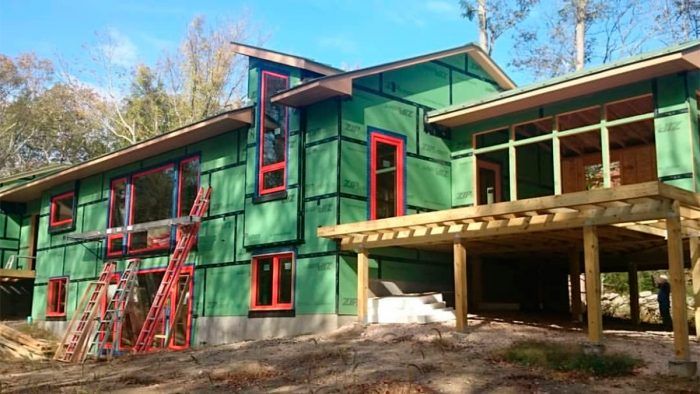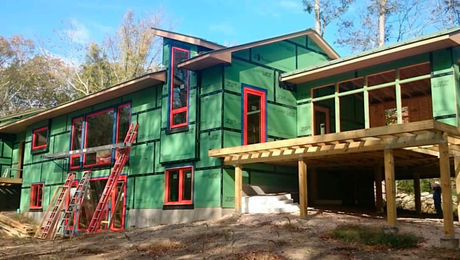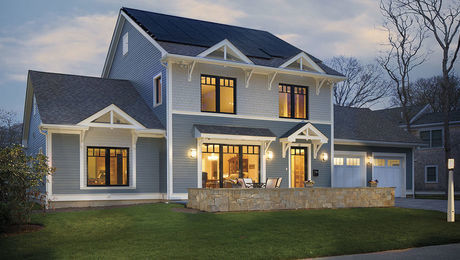Why “Long Live Our Buildings” Has Become My Motto
After centuries of evolution in building technology, the basic needs of comfort and durability are still the driving forces behind high-quality home design and construction.

“LONG LIVE OUR BUILDINGS”—I started using this phrase to punctuate my posts on Instagram when I began sharing my design and construction insights about a year or so ago. It’s just four words, but man, they pack a punch. When searching for a title to my blog, it wasn’t hard to determine that these four words carry a message. They say a picture is worth a 1000 words—well, the phrase “Long Live Our Buildings” feels just as powerful to me.
We’ve been building houses in this country for well over 300 years. I’ve had the privilege of working on some old-timers in my career–the oldest dating back to the 1690s, a few from the 1700s, and a number of them from the 19th century. Throughout those three centuries, a wider selection of materials has become available, construction technology has vastly improved, and the solutions desired by homeowners have inspired an excess of material options and construction details. Needless to say, the choices in the building industry are continually becoming more diverse and complex, with development and innovation at almost every turn. The one constant is the demand for success.
I’m not talking about creating that magazine cover photo of a great room or kitchen. I’m talking about putting the buildings we design and build in a position to succeed. Just as materials and needs have evolved, so has the success story. That 1690s home I worked on was built solely to create basic shelter: get a family inside, out of the cold and rain; build a controlled fire; and safely contain the family from the outdoor environment. Given that set of fundamental criteria, the home provided “success” for a family’s needs at that time in history. It was able to stand for a very long time because of qualities of its design that didn’t relate to the immediate success of providing shelter. Yes, it leaked water, the wind blew through it, and the central fireplace heated as much of the surrounding exterior as it did the interior. Those failures worked in concert to offset each other, and in the end provide a level of success that was acceptable to the original homeowners. Things leaked and got wet, and then either the sun or the fireplace provided heat energy to dry things out. The fact that the building is still standing confirms that things dried out more than they got wet—a key factor in the durability of building assemblies made of water-sensitive materials.
While the basic premise of “It’s OK if things get wet, as long as the drying exceeds the wetting” still stands, our idea of success has evolved with the times. Energy conservation, airtightness, and thermal efficiency have drastically reduced the wasted energy leaving our buildings. The wasted energy that contributed to the longevity of those old houses doesn’t exist anymore. The process of building a successful building has never been more challenging than it is now. Client expectations have never been higher, with requests such as “I want the whole wall to be glass, but I don’t want to be cold,” and “I want no roof overhangs, but don’t want the windows to leak.” We’ve all heard it, and are currently forced to work through it. Building assemblies are more complicated than they have ever been. The amount of energy moving through our assemblies has been drastically reduced, while the demands for comfort, health, and durability are at an all-time high.
So “Long Live Our Buildings” is just that—a pledge to strive for success under today’s level of building scrutiny. It’s about doing what conscientious architects and builders already do: put our buildings in a position to succeed. As design professionals and building professionals, it is our job to educate our clients and help them understand the concepts behind putting their project in a successful position. Every day I am forced to make decisions about the buildings I design. The choices I make can put my buildings in a position to last for a very long time, or could be the reason the home needs serious repairs before its mortgage is paid off.
In my experience I have found that all clients want to keep a tight budget—nobody wants to give their money away, including me. But here is what I have also learned: The cost of doing it right the first time is far less expensive then dealing with major building failures later on. I have an old friend who nailed it when he told me, “There are two ways of doing things: the right way, and again.” I jokingly comment when leading seminars, “Clients don’t care how windows get installed, but they care when they leak.” In today’s world, after a couple hours of searching the internet, a homeowner can become what he or she believe to be a building-science expert with regards to proper window installation. Any failures give people a lack of confidence in our industry and create a very high hurdle for those trying to do it right the first time.
We all have different talents, and these talents are all at different levels of development. As professionals we need to understand our personal limits. If we don’t have complete confidence in our ability to deal with specific scenarios or construction details, we need to seek out those who can provide additional guidance. Many simply continue to use methods and details that have been around forever without addressing the changing needs of our buildings. This lack of forward thinking only sets them up for failure. Our industry is a very challenging one to excel in. Numerous variables have to be perfectly aligned in our everyday work to ensure success. We have to be constantly on the learning curve, striving for a better seat. It is, however, an industry that offers extreme satisfaction in knowing we have done it right; that we have built something that will last, and last a long time… Long Live Our Buildings!



























